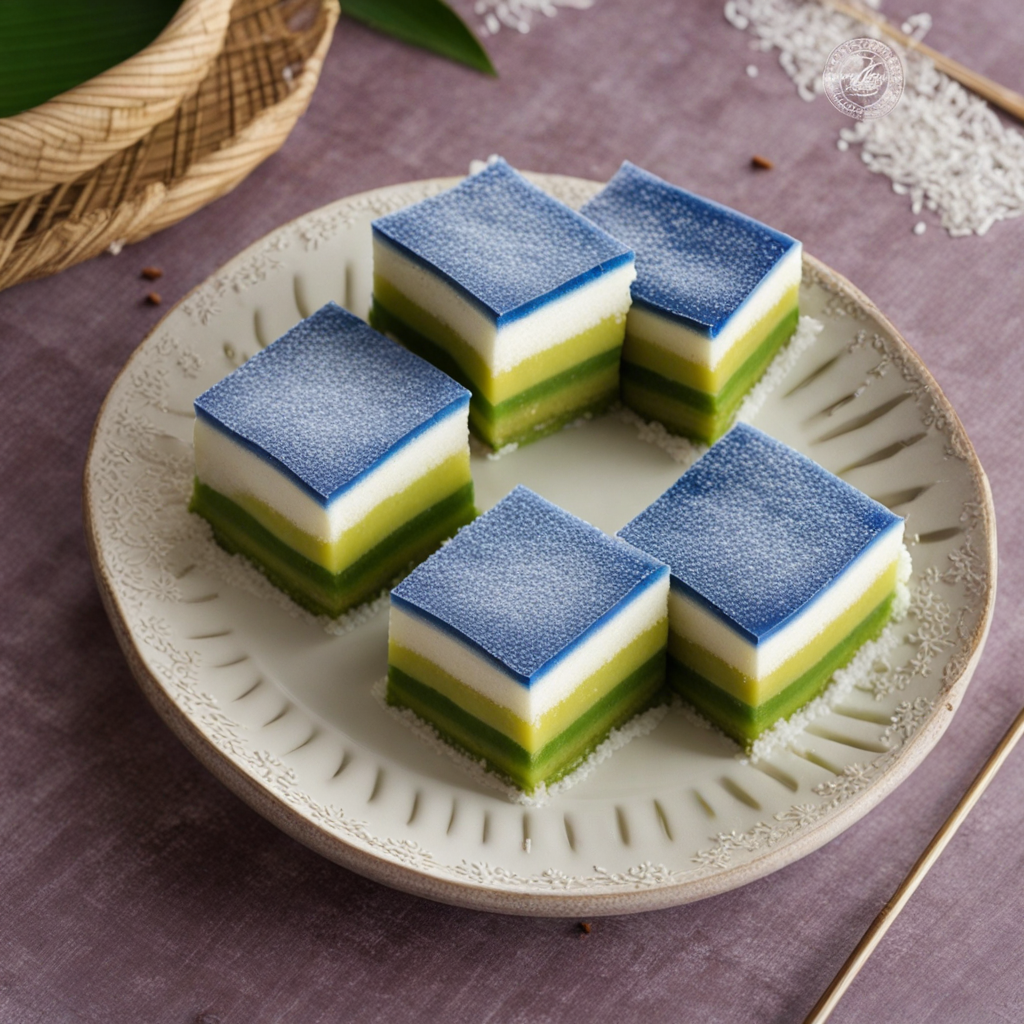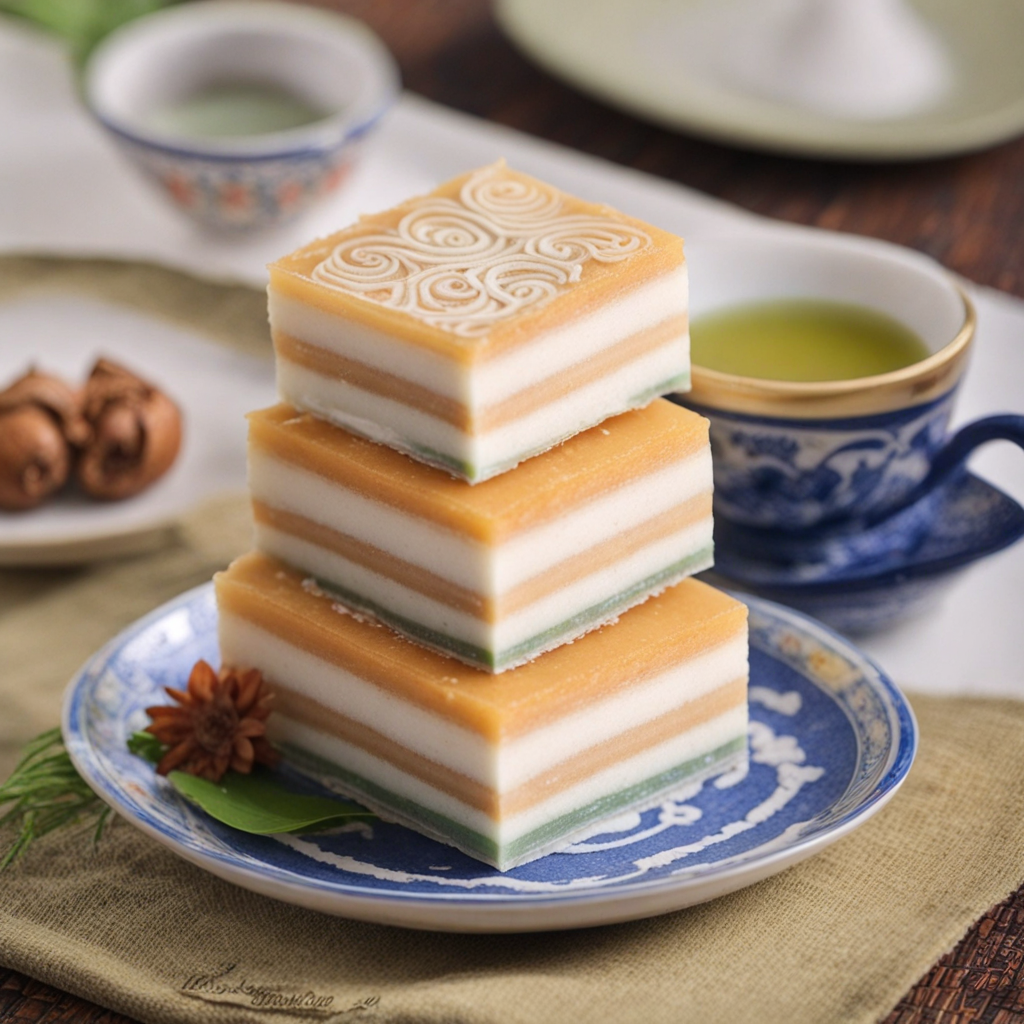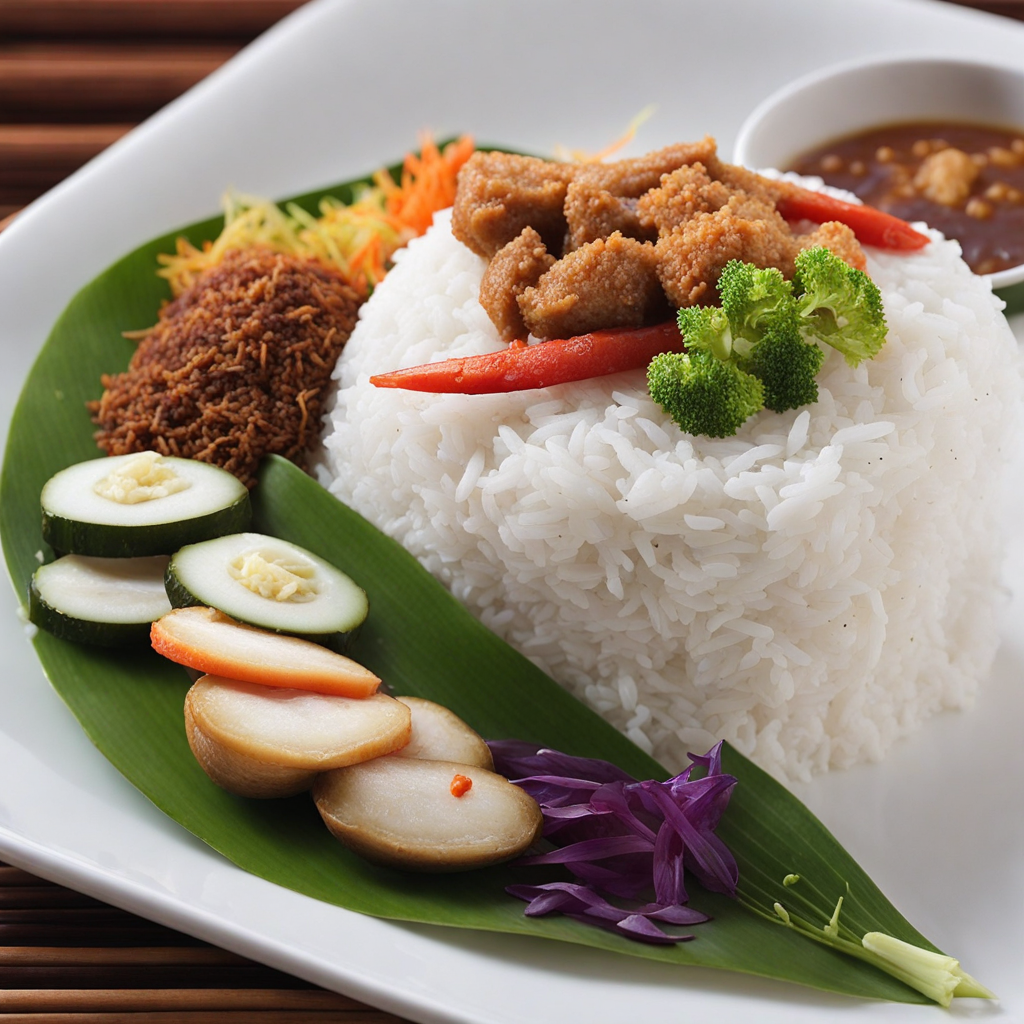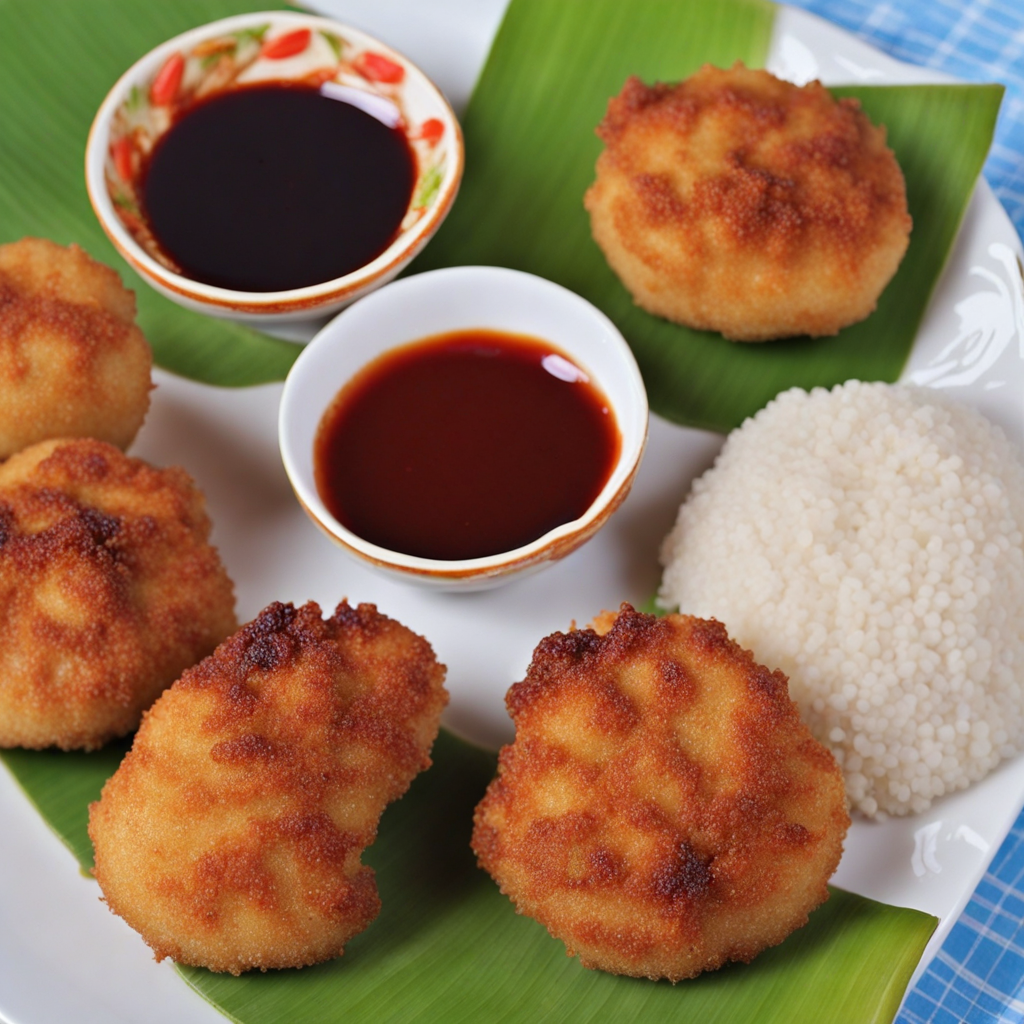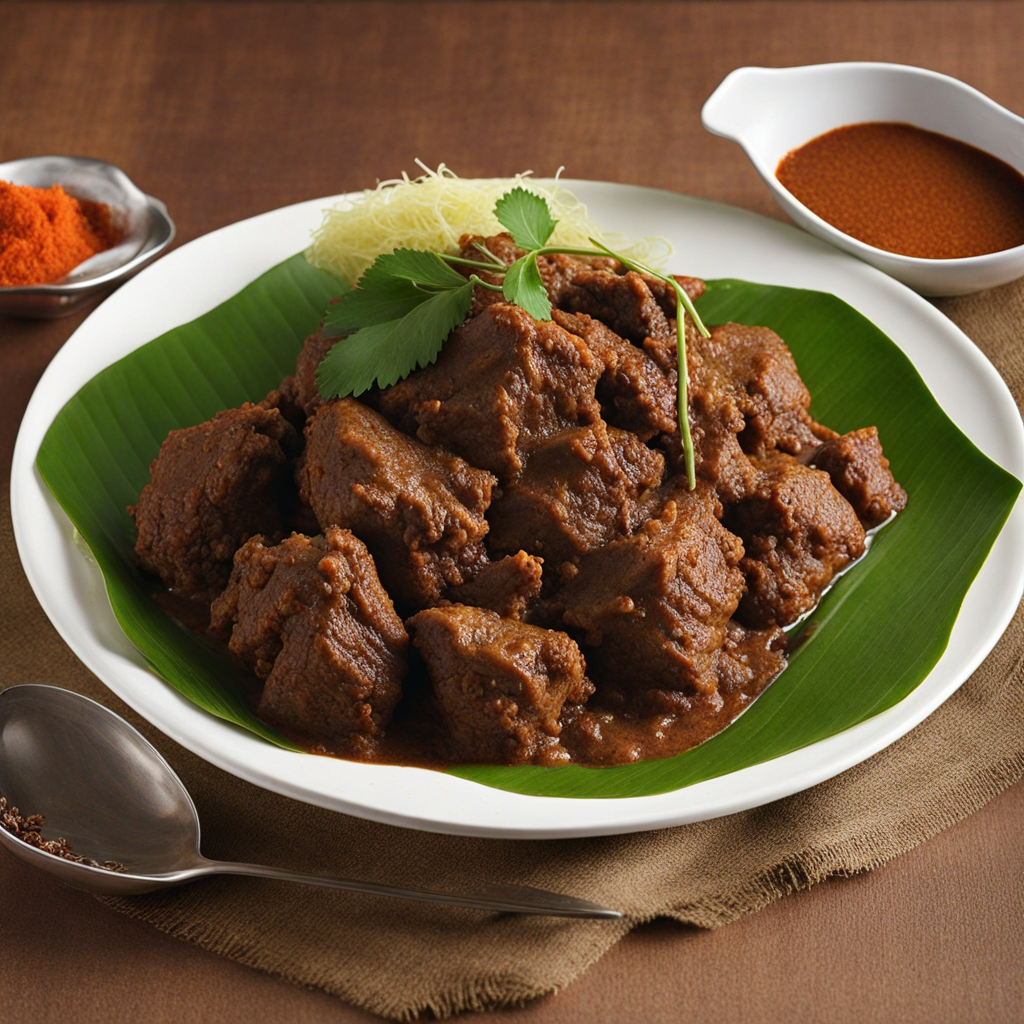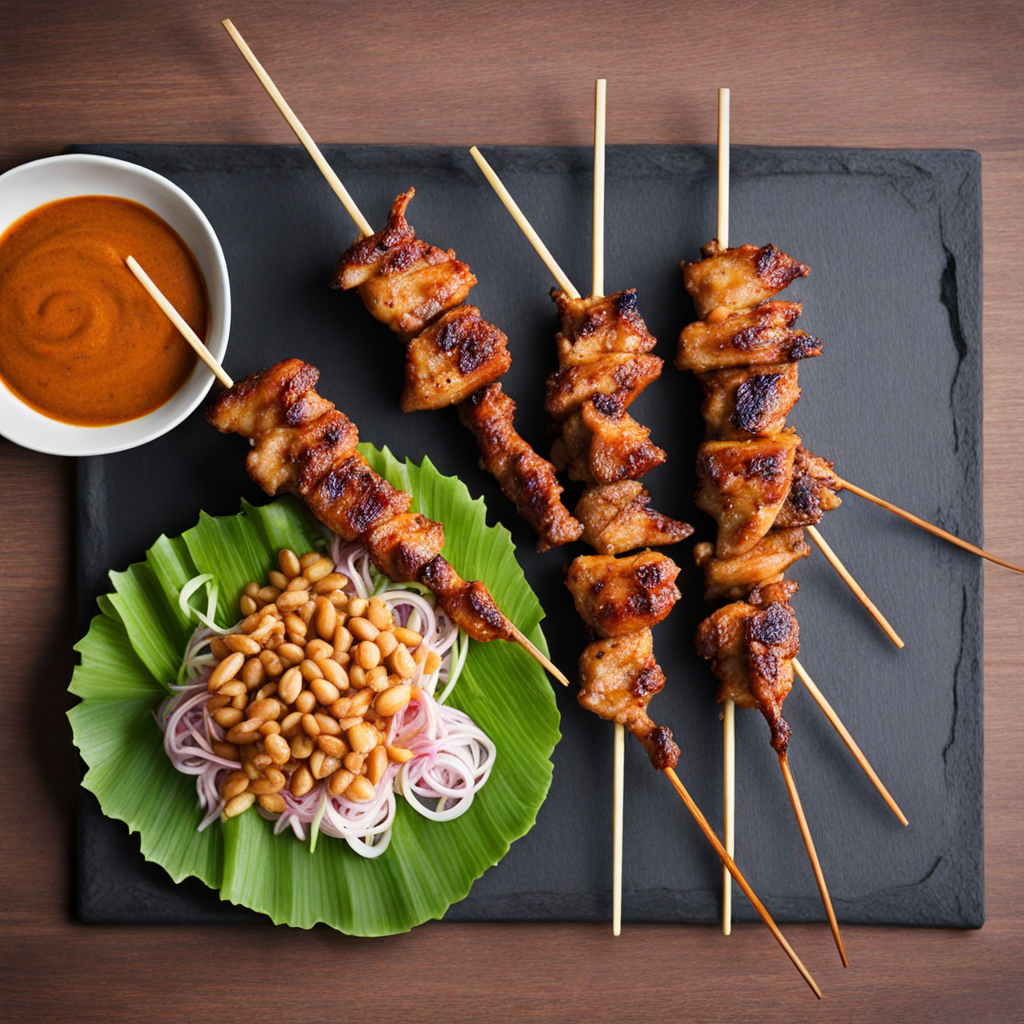Kue Lapis
Kue Lapis is a delightful Indonesian steamed cake that captivates the senses with its vibrant layers and unique texture. This traditional dessert is made from a blend of rice flour, coconut milk, and sugar, resulting in a slightly chewy consistency that melts in your mouth. The cake is typically infused with pandan leaves, giving it a beautiful green hue and an aromatic fragrance that enhances its appeal. Each layer is carefully poured and steamed, creating a visually stunning treat that showcases alternating colors, often in shades of green, white, and sometimes even red or yellow, making it as much a feast for the eyes as it is for the palate. One of the most enchanting aspects of Kue Lapis is its intricate preparation. The process involves pouring a thin layer of batter into a steamer and cooking it until firm before adding another layer. This method not only creates the signature layered effect but also allows for a delightful interplay of textures. When you take a bite, you experience the soft, moist layers that are slightly sticky, offering a satisfying chewiness that is unlike any ordinary cake. The subtle sweetness, combined with the fragrant coconut and pandan, creates a harmonious balance that is both comforting and refreshing. Enjoying Kue Lapis is often a communal experience in Indonesia, where it is served during special occasions and festive gatherings. This cake is not just a dessert; it embodies tradition and togetherness. Whether enjoyed with a cup of tea or as a sweet ending to a meal, Kue Lapis invites you to savor its unique flavors and appreciate its cultural significance. Each bite transports you to the vibrant streets of Indonesia, where the artistry of food is celebrated with every layered slice.
How It Became This Dish
Origins of Kue Lapis Kue Lapis, a traditional Indonesian dessert, finds its roots in the rich tapestry of Southeast Asian culinary heritage. The name itself translates to "layered cake" in Indonesian, aptly describing the dessert's unique structure. Its origins can be traced back to the influence of Chinese and Dutch colonial cuisines, which merged with local ingredients and culinary techniques. The earliest forms of layered cakes can be seen in various cultures, but Kue Lapis is distinctively Indonesian, characterized by its vibrant colors and rich flavors. Historically, Kue Lapis is believed to have originated in the royal courts of Java, where it was often prepared for special occasions and ceremonies. The cake's intricate preparation and presentation reflected the status of the royal families, showcasing their wealth and artistry. The use of natural ingredients, such as pandan leaves for green coloring and coconut milk for a rich flavor, marked its evolution into a beloved dessert across the archipelago. \n Cultural Significance In Indonesian culture, food is deeply intertwined with social and religious practices. Kue Lapis holds a special place in various celebrations, from weddings to religious festivals such as Eid and Chinese New Year. Its layered appearance symbolizes harmony and unity, making it a fitting treat for auspicious occasions. The act of sharing Kue Lapis among family and friends embodies the spirit of togetherness, reflecting the communal values inherent in Indonesian society. Furthermore, Kue Lapis is often associated with the concept of "syukuran," or gratitude, where families prepare and distribute this dessert to express appreciation for blessings received. Its presence at significant life events reinforces its role as a cultural marker, linking generations through the shared experience of enjoyment and celebration. \n Ingredients and Preparation The traditional recipe for Kue Lapis consists of simple, yet high-quality ingredients. The primary components typically include rice flour, tapioca flour, coconut milk, sugar, and natural flavorings such as pandan or chocolate. The preparation process is labor-intensive, requiring meticulous attention to detail. Layers are prepared separately, steamed, and then stacked to create the final product. Each layer is often tinted with natural colorings, resulting in a visually striking cake that is as much a feast for the eyes as it is for the palate. The steaming process is crucial, as it preserves the moisture and ensures the cake's signature chewy texture. Variations of Kue Lapis exist, with some incorporating additional flavors like durian or fruits, broadening its appeal and showcasing the diversity of Indonesian cuisine. \n Regional Variations As Kue Lapis spread throughout Indonesia, regional variations began to emerge, each reflecting local tastes and traditions. In Java, the cake is often made with a base of pandan-flavored layers, while in Sumatra, the addition of spices like cinnamon or nutmeg may be included to reflect regional flavor profiles. Bali, known for its vibrant culture, often features a more colorful version adorned with intricate designs, making it a popular offering during festivals and temple ceremonies. The availability of ingredients also plays a significant role in regional variations. For instance, areas abundant in coconuts may produce a richer version of Kue Lapis, incorporating more coconut milk. Conversely, regions where rice is a staple may focus on the texture and layering techniques, resulting in a firmer cake. This diversity not only highlights the adaptability of Kue Lapis but also underscores the regional identities within Indonesia's vast culinary landscape. \n Modern Adaptations In contemporary times, Kue Lapis has evolved to meet changing tastes and lifestyles. With the rise of global culinary influences and the increasing accessibility of ingredients, modern interpretations of this traditional dessert have emerged. Chefs and home bakers alike experiment with flavors and presentation, incorporating elements such as chocolate, matcha, or even fusion styles that blend Kue Lapis with Western desserts. Additionally, the dessert has found its way into international markets, appealing to a broader audience eager to explore authentic Indonesian flavors. Social media platforms have played a pivotal role in this phenomenon, showcasing the beauty and intricacy of Kue Lapis, enticing food lovers from around the world to seek out this unique dessert. \n Preservation of Tradition Despite these modern adaptations, there remains a strong movement among traditionalists to preserve the authentic methods of making Kue Lapis. Culinary schools and cooking classes across Indonesia often include Kue Lapis in their curriculum, ensuring that younger generations learn the classic techniques passed down through families. Community events and food festivals also celebrate Kue Lapis as part of Indonesia's culinary heritage, providing a platform for local artisans to showcase their skills and share stories behind their recipes. This dedication to preserving traditional practices demonstrates a collective commitment to maintaining cultural identity amidst globalization. \n Conclusion Kue Lapis stands as a testament to Indonesia's rich culinary history, embodying the fusion of cultural influences and the evolution of traditional practices. Its layered structure not only delights the taste buds but also symbolizes unity and celebration in Indonesian society. As the world embraces diverse culinary experiences, Kue Lapis continues to capture hearts and palates, serving as a delicious reminder of Indonesia's vibrant food culture. The dessert's journey from royal courts to modern kitchens illustrates the enduring power of food as a medium for storytelling, connection, and cultural expression.
You may like
Discover local flavors from Indonesia


